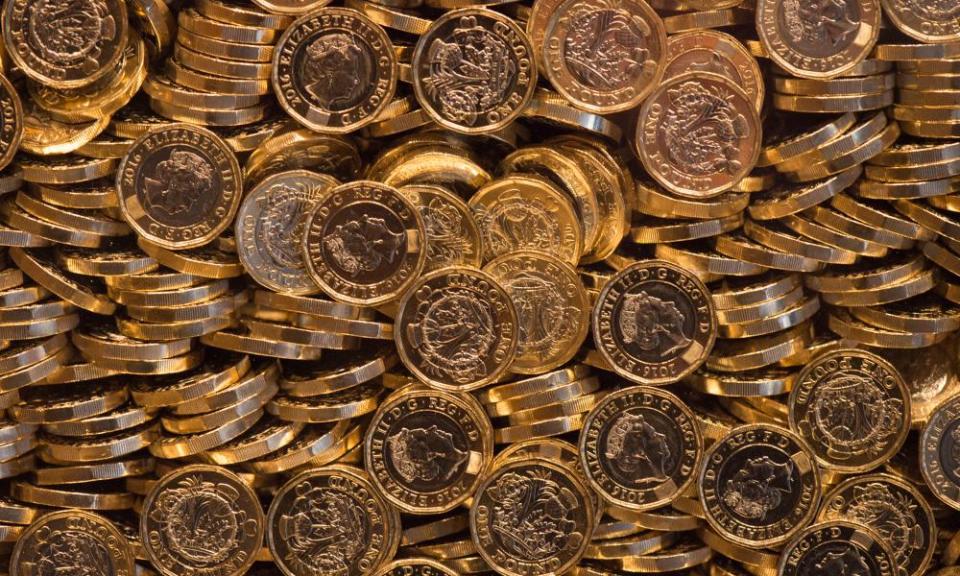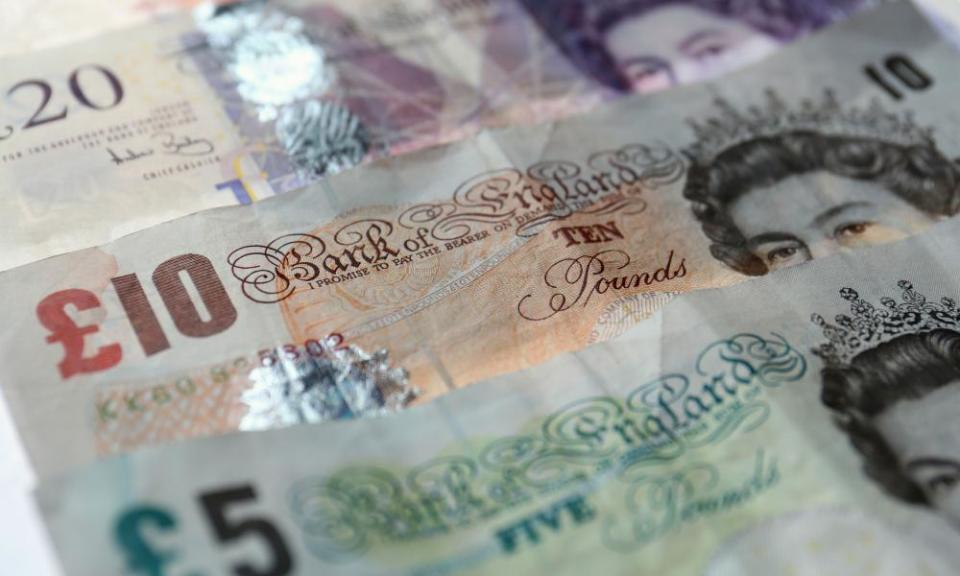Quids in: why it’s time to get rid of your £1 coins

It’s all change once again for the UK’s coins and notes. While millions of us are still getting used to the new “non-vegetarian” plastic £5 notes, it’s the £1 coin that is next to receive a makeover. The new 12-sided “bimetallic” (made of two metals) pound coin is being introduced on 28 March. Then in September it’s the turn of the tenner (see below).
The new £1, which resembles the old threepenny bit, will be “the most secure coin in the world”, claims the Royal Mint. Here’s everything you need to know about the new coin – and what’s going to happen to the old “round pounds”.
Why do we need a new £1 coin?
The current coins are being replaced because they are so vulnerable to being faked – around one in every 30 in circulation is a dud. The new coin will “reduce the costs of counterfeits to businesses and the taxpayer,” says the Mint.
When will I get one in my hot little hand?
Possibly on 28 March. The Royal Mint is producing 1.5bn of the new coins, and banks and shops will start to receive them from that date. However, officials say it will take about a month for the new coins to reach most bank branches and retailers.
What’s happening to the old coins?
There will be a six-month period when the current and the new coins are in circulation at the same time. During this time both are legal tender and you can use either to make payments. However, the current coins will gradually be withdrawn from the system – it is estimated that by August more than 50% of the £1 coins in our pockets will be the new ones.
The legal tender status of the round £1 coin will be withdrawn on 15 October. From this date shops will no longer accept these coins, but you will still be able to take them to your bank.
So what should I do?
“You should continue to spend any of the current £1 coins you carry as normal,” says the Mint. In fact, the public will be urged to spend their round pounds “as soon as possible” before 15 October, as they will be melted down to make the new coins. Perhaps it’s all a wheeze designed to give the economy a boost.
So if you’ve got a stash of £1 coins saved in a money box, jam jar or giant whisky bottle, these should be spent or paid into your bank account before 15 October. That said, the Mint says that after that deadline most high street banks will continue to allow people to pay round pounds into their account – although presumably this will only be a temporary state of affairs.
Is the new coin bigger or smaller than the old one?
At 2.8mm thick and weighing 8.75g, the new coin is thinner and lighter than the round pound, which is 3.15mm thick and weighs 9.5g. However, the new £1 is slightly bigger than its predecessor – the maximum diameter is 23.43mm. The current £1 coin is 22.5mm in diameter.
Will vending machines, parking meters, and the like be ready?
Businesses have had a while to prepare – the original announcement about the change was in March 2014. However, the Mint says that “not all machines will work with the new coin from the date of introduction”.
The Automatic Vending Association has predicted that the upgrades required so that the UK’s estimated 500,000 vending machines are ready to accept the new £1 coins will cost around £32m.
As for supermarket trolleys, Tesco told us: “We’ve replaced the lock … The new coin slots will accept the old and new pound as well as existing trolley tokens.” It’s understood the retailer’s self-service checkouts will also be ready.
Transport for London says all stations on the London Underground, Docklands Light Railway, London Overground and TfL Rail network will accept the new coin once it is launched.
What about the design?
Its bimetallic construction is similar to the existing £2 coin. The outer ring is gold-coloured (nickel-brass) and the inner ring is silver-coloured (nickel-plated alloy). The reverse of the new coin shows the English rose, the Welsh leek, the Scottish thistle and the Northern Irish shamrock emerging from one stem within a royal coronet. This was created by David Pearce, who won a public design competition at the age of 15.
What makes the new coins so secure?
Their shape and construction make them much harder to counterfeit. They have an image like a hologram that changes from a “£” symbol to the number “1” when viewed from different angles, there is very small lettering on the lower inside rim on both sides, and there is what is intriguingly described as a patented “hidden high security feature” built into the coin.
Any other coin news?
Yes! Two new £2 coin designs, one honouring the aviators of the first world war and the other celebrating Jane Austen, will enter circulation in April and July respectively. A 50p celebrating the genius of Sir Isaac Newton will follow in September.
The dates to note

If you’ve still got some paper fivers tucked away somewhere you should start offloading them soon. On 5 May they will cease to be legal tender and will no longer be accepted by shops.
If after that date you discover some paper £5 notes in a drawer or tucked in a coat pocket, don’t despair – all Bank of England notes retain their face value for all time. If your bank, building society or post office refuses to accept them, they can be exchanged at the Bank of England in London’s Threadneedle Street, either by post or in person. “We will redeem them for their face value,” a spokeswoman says.
The polymer bank note revolution (the Bank prefers not to use the word “plastic”) is continuing apace. A new £10 note featuring Jane Austen will be issued in September, exactly a year after the new fivers started to enter circulation, and a polymer £20 note featuring the artist JMW Turner will follow by 2020.
The polymer £10 notes will be slightly smaller than the current paper ones, but bigger than the new fivers. As is usual, the old notes will start to be withdrawn from circulation as the new ones are introduced.
Earlier this month the Bank of England said that despite protests from vegans, animal rights activists and religious groups over the fact that the plastic £5 notes contain traces of animal fat, it had decided not to withdraw the notes from circulation, or change the “recipe” for the new tenners. The Bank added that production of the new £10 notes began last August, several months before it emerged that tallow was used in the process, and at least 275m have already rolled off the presses.
Officials are thought to be looking at switching to a less controversial substance such as palm oil or coconut oil for the planned £20 note.
Meanwhile, there are currently no plans to replace the £50 note featuring Boulton and Watt.

 Yahoo Finance
Yahoo Finance 